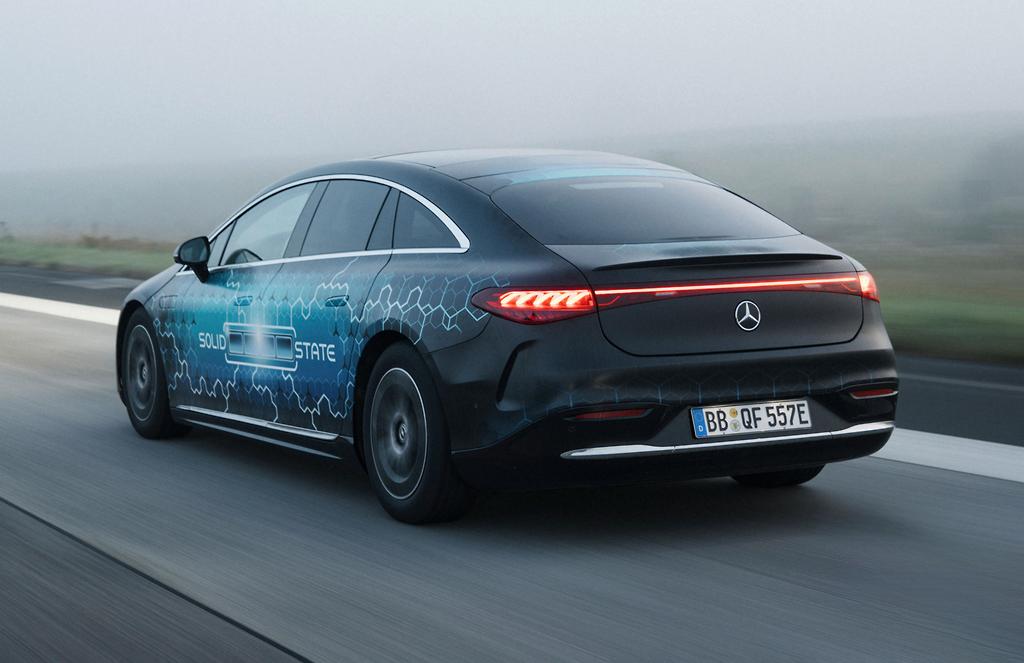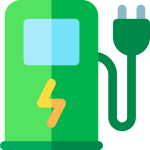
Australia in the Picture: Why This Matters for EV Owners Down Under
Australians have watched the electric vehicle (EV) landscape evolve rapidly, with charging networks expanding, battery costs trending downward, and government and industry leaders seeking to accelerate adoption. Mercedes-Benz’s latest solid-state battery developments, while not a consumer product today, could reshape how far EVs can travel on a single charge and how quickly they can be charged. For Australian drivers, a future where vehicles offer significantly higher energy density and ultrafast charging could translate into longer ranges between fills, shorter charging stops, and potentially lower total ownership costs. However, translating lab breakthroughs to Australian showrooms depends on production timelines, supply chains, and local charging infrastructure. What happens in Stuttgart and at the Factorial Energy collaboration will matter globally, including here in Australia.
The Milestone: 1205km in One Charge on an EQS Test Vehicle
Mercedes-Benz demonstrated a bold preview of its next-generation solid-state battery technology by equipping a current-generation EQS limousine with an experimental power pack. In a demanding real-world test, the vehicle completed a 1,205-kilometre journey from Stuttgart, Germany to Malmö, Sweden on a single charge, finishing with more than 137 kilometres of range still available. The feat stands as a demonstration of the potential energy efficiency and endurance gains promised by solid-state chemistry, even as the industry recognises that prototypes and production cars operate under different constraints.
What the Numbers Indicate
- The prototype could theoretically exceed 1,400 kilometres in certain real-world conditions if the test drive had continued beyond the planned stop.
- Solid-state cells are reported to offer around 25 per cent more energy density within the same battery casing than today’s best‑in‑class lithium-ion packs.
- Industry chatter suggests the technology could enable a 1,000 kW (DC) charging capability in ideal conditions.
- The first production EV to use a next-generation solid-state power pack is still targeted for around 2030, according to Mercedes-Benz executives.
The Finer Details: What Mercedes-Benz Has Shown
Mercedes-Benz’ chief technical officer, Markus Schäfer, noted that the EQS prototype could have reached up to about 1,400 kilometres if the test drive hadn’t paused, effectively beating prior concept records by a small margin. The solid-state battery is the product of a collaboration with US-based Factorial Energy and Mercedes-AMG High Performance Powertrain in the UK. While full technical specifications remain under wraps, the company emphasises that solid-state cells can be integrated into cars and function reliably in real-world driving, marking a significant milestone in the path toward scalable production.
Despite the optimism, production challenges persist. Solid-state chemistry introduces complexities such as the tendency for cells to swell with heat, which can affect packaging and durability. To address this, engineers have experimented with pneumatic actuators that respond to volume changes as the pack charges and discharges. In the Stuttgart test, Mercedes squeezed the solid-state power pack into the same 108 kWh usable-pack casing used by the standard EQS battery, delivering a 25 per cent boost in energy content without increasing weight or external size.
Cooling remains essential to maintaining performance. A passive airflow cooling system has been developed to keep solid-state cells within their optimum temperature window, helping to sustain peak efficiency during long-range drives and high-current charging scenarios.
The Road to Production: What We Know About Timelines and Hurdles
Solid-state batteries are widely hailed as a potential game-changer for EVs because they can offer higher energy density, improved safety, and faster charging under certain conditions. Mercedes-Benz has framed the technology as a “true game-changer”-but with a reality check: bringing solid-state power packs to mass production faces formidable obstacles, from scaling manufacturing to ensuring stability across billions of cycles and in varied climates.
Key takeaways on the timeline and challenges:
- 2030 remains the target for the first production vehicles using the next-generation solid-state power pack, according to Mercedes-Benz leadership. This is a cautious but widely cited horizon given the complexity of moving from lab prototypes to factory lines.
- Deep-rooted production challenges include cell swelling under thermal stress, long reclamation cycles for production equipment, and the need for robust supply chains for new electrolytes and cell components.
- Even with a 25 per cent energy-density improvement in the same external packaging, energy storage remains sensitive to temperature, age, and high-current charging conditions; engineering workarounds such as pneumatic actuators and advanced cooling are critical to viability.
- Rapid charging at the scale of 1,000 kW remains an aspirational capability in early demonstrations. Real-world performance will depend on battery state-of-charge, cell chemistry, thermal management, charger availability, and vehicle software optimization.
What These Developments Mean for Drivers and the EV Landscape
For the global EV market, solid-state technology signals the possibility of longer-range vehicles without proportional increases in battery weight or volume. In practical terms, a 25 per cent gain in energy density within the same casing could translate to greater range without needing larger packs, which would be highly attractive for consumer convenience and for fleets seeking cost-per-kilometre savings. The prospect of 1,000 kW fast charging is equally transformative, potentially cutting top-up times dramatically and enabling longer road trips with fewer stops. However, the real-world impact hinges on the successful scaling of production, the affordability of new materials, and the development of compatible charging infrastructure. From an Australian viewpoint, the implications are significant but contingent. Australia’s vast geography, dispersed population centers, and varying regional charging access mean that any meaningful range extension and faster charging must be matched by robust, widely accessible charging networks and grid resilience. If 2030-2035 milestones are met, Australians could benefit from vehicles that can cover long distances more confidently and with shorter charging breaks. That said, the pace at which solid-state technology reaches showrooms will be shaped by supply chains, cost dynamics, and how quickly the domestic market can adopt high-power DC charging at scale.
Conclusion: A Cautionary Optimist’s Look Ahead
Mercedes-Benz’s 1,205-kilometre test with a solid-state power pack marks a milestone that helps the industry imagine what’s possible. While it confirms the feasibility of longer-range, high-performance packs, the leap from experimental pack to mass-produced, affordable EVs remains substantial. The coming decade will reveal whether solid-state can deliver the reliability, cost, and manufacturing practicality needed to redefine EV ownership globally, including in the Australian market. For now, the excitement is warranted-this is a credible and carefully managed step toward a safer, more energy-dense future, with higher charging capabilities and potentially lower ownership costs over time.
FAQs
What is a solid-state battery?
A solid-state battery uses a solid electrolyte instead of the liquid or gel electrolyte found in conventional lithium‑ion cells. This can improve safety by reducing the risk of liquid electrolyte leaks and thermal runaway, while offering higher energy density and potentially faster charging, depending on the cell design and thermal management. In practice, many automakers are pursuing solid‑state chemistry as a pathway to longer range and safer packs, though production at scale remains a challenge.
When will solid-state batteries appear in production vehicles?
Mercedes-Benz and its partners have suggested production could begin around 2030 for next‑generation solid-state power packs. Industry timelines vary by manufacturer and region, and many automakers stress that while prototypes and pilot packs are promising, achieving reliable, cost-effective mass production will take years of refinement. Until then, the technology remains in the development and pilot-testing phase.
Does a 1,000 kW (DC) charging capability mean shorter charging times today?
In theory, 1,000 kW charging can dramatically reduce top-up times, but real-world outcomes depend on several factors: battery temperature, state of charge, charger availability, and how the vehicle’s battery management system handles high-power input. Most current production EVs cap fast charging at lower rates, and the infrastructure to support universal 1,000 kW charging is still expanding. Even with high-power capability, practical charging times will vary.
What does this breakthrough mean for the Australian EV market?
For Australia, the potential of solid-state batteries is compelling, offering longer range per charge and faster top-ups, which could ease long-distance driving and reduce charging stops. However, Australia’s adoption will depend on when production-ready solid-state packs arrive, how quickly high-power charging networks expand, and whether the higher unit costs can be offset by cumulative savings in maintenance, cooling, and fleet economics. As always, careful policy support and investment in charging infrastructure will influence how quickly these benefits materialise locally.
Could solid-state batteries replace current lithium‑ion packs in existing vehicles?
Solid-state batteries are being pursued as a next-generation solution and are not expected to replace existing lithium‑ion packs in current production models immediately. In the short term, automakers are likely to stagger integration, rolling out solid-state packs in new platforms or high-end variants as production matures and costs come down. Retrofitting existing models with solid-state packs is unlikely in the near term due to packaging, safety, and integration considerations.
What should Australian EV buyers watch for next?
Watch for: (1) announced production timelines from major automakers, (2) updates on charging networks enabling ultra-fast charging, (3) pilot programs and field trials in nearby regions, and (4) policy signals that help accelerate high‑power charging and grid readiness. While solid-state breakthroughs are promising, the practical uptake will hinge on a balanced mix of vehicle availability, affordability, and robust charging options across urban and regional Australia.
About EV Evolution
EV Evolution is the leading online platform dedicated to Australian electric vehicle owners and enthusiasts. We foster a vibrant community, delivering essential EV news and insights, and enhancing user engagement through our innovative, AI-powered chatbot for dynamic discussions. Our mission is to empower Australian electric vehicle owners and enthusiasts by fostering a vibrant, AI-driven online community that connects, informs, and advances the nation’s electric vehicle landscape.




